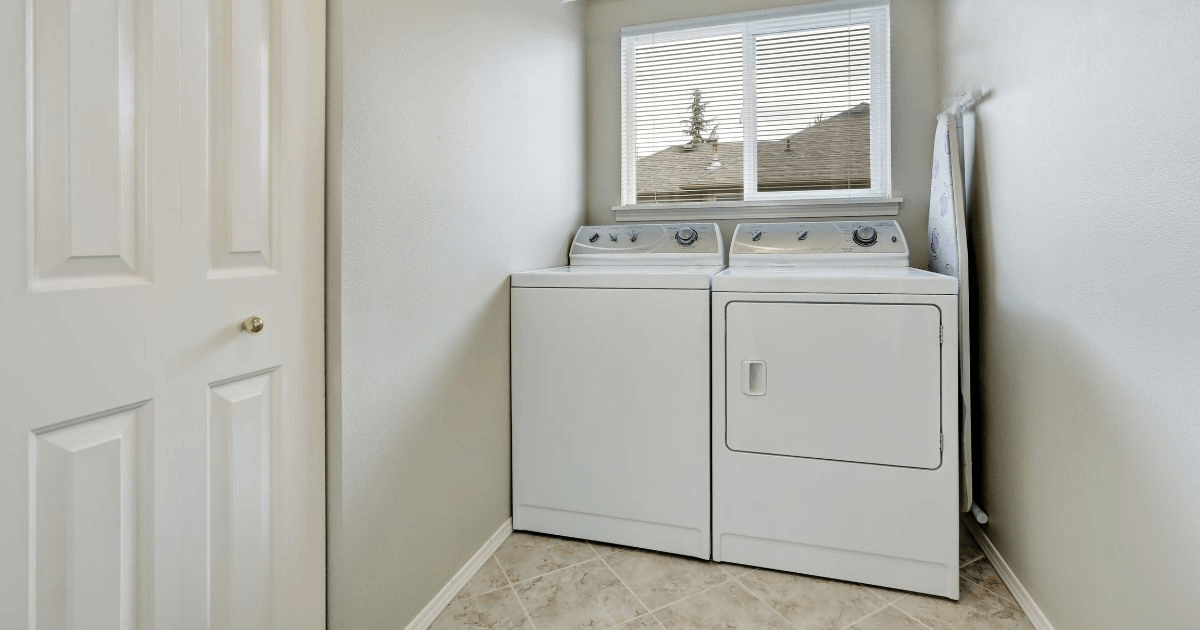

High energy bills can feel like a never-ending headache. You keep the lights off when you can, unplug chargers, and maybe even brave the summer heat without cranking the AC. But despite your best efforts, the numbers on that monthly statement stay stubbornly high.
The truth is, some appliances consume far more energy than others. These devices run constantly or demand significant power when in use, quietly driving up costs month after month. Identifying which appliances drain the most energy—and knowing when to replace them—can make a real difference in your monthly expenses and environmental footprint. Explore which energy-hungry appliances you should replace first.
Not all appliances pull the same amount of power. A phone charger uses minimal electricity, while a refrigerator runs 24/7 and racks up substantial costs over time. Understanding how different devices consume energy helps you pinpoint where the biggest opportunities for savings lie.
Refrigerators typically consume between 100 and 800 kilowatt-hours (kWh) annually, depending on age and efficiency. Older models from the 1990s can use twice as much energy as modern Energy Star–certified units.
Water heaters rank among the most power-intensive devices, accounting for roughly 14 to 18 percent of household energy use. Standard tank models constantly heat water to maintain temperature, while tankless versions heat water only on demand.
Washing machines vary widely in consumption. Top-loading models with agitators generally use more water and energy than front-loading or high-efficiency top-loaders. Heated dry cycles in dishwashers also add significant energy costs.
Air conditioners can consume anywhere from 500 to over 4,000 kWh per year, depending on unit size, efficiency rating, and climate. Central air systems typically use more power than window units or ductless mini-splits.
Age plays a major role in appliance efficiency. Devices manufactured before 2000 often lack the energy-saving technologies found in newer models. Standards have tightened considerably over the past two decades, meaning older appliances frequently consume far more power than necessary.
Usage patterns matter too. Running a dishwasher half-empty or setting your water heater to an unnecessarily high temperature increases energy waste. Even small adjustments in how you use these devices can lead to noticeable savings.
Climate and home insulation also impact energy use. Poorly insulated homes force heating and cooling systems to work harder, while humid climates make air conditioners run longer to maintain comfort levels.
Refrigerators run continuously, making them one of the largest energy consumers in most homes. Models older than 10 years typically use significantly more electricity than modern alternatives. Replacing an outdated fridge with an Energy Star–certified model can cut energy consumption by up to 40 percent, translating to substantial annual savings.
When shopping for a new refrigerator, pay attention to size. Oversized models consume more energy than necessary if they don’t match your household’s needs. Side-by-side designs tend to use more power than top- or bottom-freezer configurations.
Traditional top-loading washing machines with center agitators use more water and electricity than front-loaders or high-efficiency top-loaders. These older models also require more hot water, which further increases energy costs.
Modern high-efficiency washers use advanced sensors to optimize water levels and cycle times, reducing both water and energy consumption. Many also spin clothes faster, extracting more moisture and shortening dryer times.
Older dishwashers lack the soil sensors and efficient spray patterns found in newer models. They often require pre-rinsing, use excessive water, and rely on energy-intensive heated dry cycles.
Upgrading to a modern dishwasher can cut water use by thousands of gallons per year while also reducing electricity consumption. Look for models with air-dry or energy-saver settings to maximize efficiency.
Standard tank water heaters maintain a reservoir of hot water at all times, constantly reheating it to compensate for heat loss. This process consumes considerable energy, especially in older or poorly insulated tanks.
Tankless water heaters eliminate standby heat loss by heating water only when needed. While they cost more upfront, they often pay for themselves over time through lower energy bills. Heat pump water heaters offer another efficient alternative, using electricity to transfer heat rather than generate it directly.
Older air conditioning units operate far less efficiently than modern alternatives. Units with a SEER (Seasonal Energy Efficiency Ratio) rating below 13 typically consume far more electricity than necessary to cool your home.
Replacing an aging air conditioner with a high-SEER model can dramatically reduce cooling costs. Ductless mini-split systems offer another efficient option, allowing you to cool specific rooms rather than the entire house.
For mobile home owners, energy-hungry appliances are one of the biggest contributors to high energy bills in mobile homes. The compact nature of these spaces means appliances work harder to maintain comfort, making efficient models even more valuable.
Not everyone can replace every appliance at once. Prioritizing your upgrades based on actual consumption and potential savings helps you make the most of your investment.
Start by reviewing several months of energy bills to identify patterns. Many utility companies provide detailed breakdowns showing how much energy different categories of appliances consume. Some even offer free energy audits that pinpoint specific inefficiencies in your home.
If your utility doesn’t provide this service, consider purchasing an energy monitor. These devices track real-time electricity usage and help you identify which appliances draw the most power.
Once you understand your consumption patterns, compare your appliance usage to national averages. If your refrigerator or water heater consumes significantly more energy than typical models, these become top replacement candidates.
Also consider the age and condition of each appliance. A 15-year-old refrigerator that still runs might seem fine, but replacing it with an efficient model could save hundreds of dollars annually. Devices nearing the end of their expected lifespan should move higher on your priority list.
Replacing appliances requires upfront investment. If a full upgrade isn’t feasible right now, several strategies can reduce energy consumption without major expenses.
Simple behavioral changes can trim energy costs. Wash clothes in cold water whenever possible, since heating water accounts for most of a washing machine’s energy use. Run dishwashers and washing machines only with full loads to maximize efficiency.
Set your water heater to 120°F instead of the default 140°F. This temperature still provides plenty of hot water for most households while reducing standby heat loss. Insulating your water heater tank and pipes further minimizes energy waste.
Use your air conditioner’s programmable thermostat to raise temperatures when you’re away or asleep. Each degree above 72°F can reduce cooling costs by 3% to 5%.
Regular maintenance extends appliance lifespan and improves efficiency. Clean refrigerator coils every six months to help the compressor run more efficiently. Replace air conditioner filters monthly during peak use to maintain airflow and reduce energy consumption.
Check door seals on refrigerators and freezers for gaps or damage. Poor seals force the compressor to work harder to maintain temperature. Descalcify your dishwasher and washing machine periodically to prevent mineral buildup that reduces efficiency.
Energy Star certification indicates that an appliance meets strict efficiency guidelines set by the EPA. These products typically use 10 to 50 percent less energy than standard models, depending on the category.
When comparing appliances, look beyond the Energy Star label to the actual energy consumption figures listed on the yellow EnergyGuide label. This information allows you to compare specific models and calculate potential savings.
Higher upfront costs for efficient appliances often pay for themselves through lower energy bills. Calculate the payback period by dividing the price difference between an efficient model and a standard one by the annual energy savings.
Many utility companies offer rebates for Energy Star–certified appliances, reducing the initial investment. Some states also provide tax credits for energy-efficient home improvements, making upgrades more affordable.
Replacing energy-hungry appliances represents one of the most effective ways to reduce household energy consumption. By prioritizing upgrades based on actual usage patterns and focusing on the biggest energy consumers first, you can achieve significant savings while reducing your environmental impact.
Start by assessing your current energy use and identifying which appliances consume the most power. Whether you replace everything at once or tackle one appliance at a time, each upgrade moves you closer to lower bills and a more sustainable home.

Put your business in front of thousands of LOCALS! Create your free listing on the NewsSTAND and update your profile anytime to share the latest info, specials, and contact details.

Got a story to Share? Pitch your idea or write an article for the NewsSTAND! Join us in highlighting the positive and powerful moments that make our city shine.

We’re passionate about working together to amplify our City. Reach out to the NewsSTAND team to explore collaboration opportunities and make a difference in our community.
Hover over each card to unlock the full story and see what you’re about to get!







